Fishing line is one of the most overlooked parts of angling, despite it being one of the most important.
It is literally the only thing between your rod and the fish! Without it, the best lures are useless and the best natural bait is just a free meal that your potential trophy catch can swim off with.
Modern fishing line is a miracle of science and engineering, being lightweight, flexible and strong. Even so, the different varieties of line have different properties that make it better or worse in certain scenarios.
So what’s an angler to do? How are we supposed to know what to spool up, and when to spool it? Have no fear, because this article will illuminate the scenarios under which each line variety can help or hinder your bass fishing prowess!
Table of Contents
The Specifics of Bass Fishing with a Spinning Reel
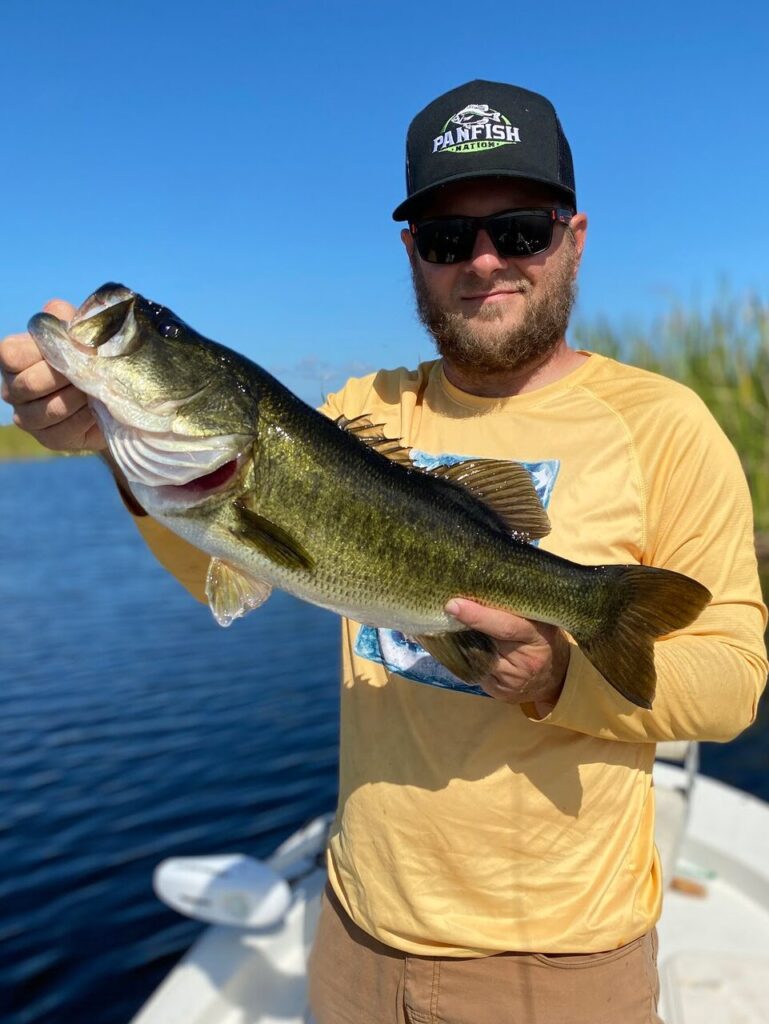
Largemouth bass are almost like a microcosm of fishing as a whole, because this singular species can exhibit a wide range of behaviors and live in a wide variety of habitats.
Some bass ambush prey from below in warm, murky ponds, while others swiftly pursue their food from behind in cold, clear streams. Many habitats lie somewhere in between! The season and region you’re fishing in can affect this even more.
These varying conditions and behaviors can affect the types of bait presentation that a bass will want to take, and line type can play a large role in this presentation.
Spinning reels are the most common type used by amateur and professional anglers alike, and differ from baitcasting or push-button reels in several ways.
A lot of the content in this article applies to fishing in both scenarios, but it should be noted that my experience with a wide variety of spinning reels forms the basis of these suggestions.
Your mileage may vary… experiment and find out what works best for your setup and region!
Monofilament Line: Flexible, Tried and True
The workhorse of the fishing world, monofilament line is named such because it is quite literally a single filament of extruded plastic polymer.
It’s the cheapest line by a longshot, making it ideal for beginners or for spooling up extra rigs for friends.
Price is the primary advantage, as more expensive braided and fluoro lines both offer improved strength and fluoro offers reduced line visibility.
Even so, it is still strong enough to handle most everyday angling, and it is relatively difficult for fish to spot it in the water since it’s translucent.
The one major area that mono line excels in is its flexibility; this is some seriously bendy line!
Sometimes, especially in slow moving water that’s particularly warm or cold, bass slow way down to rest and preserve energy. In this state, they may not want to chase loud, flashy or fast-moving bait that would require them to ‘sprint’ for it.
In these scenarios, finesse is your key… and this is where mono shines! The elasticity of monofilament line reduces the amount of motion that makes it from your rod tip to the bait, allowing for much smaller and more precise movements.
Jigs and soft plastics can be worked in a much more convincing way, looking more ‘alive’ to fish.
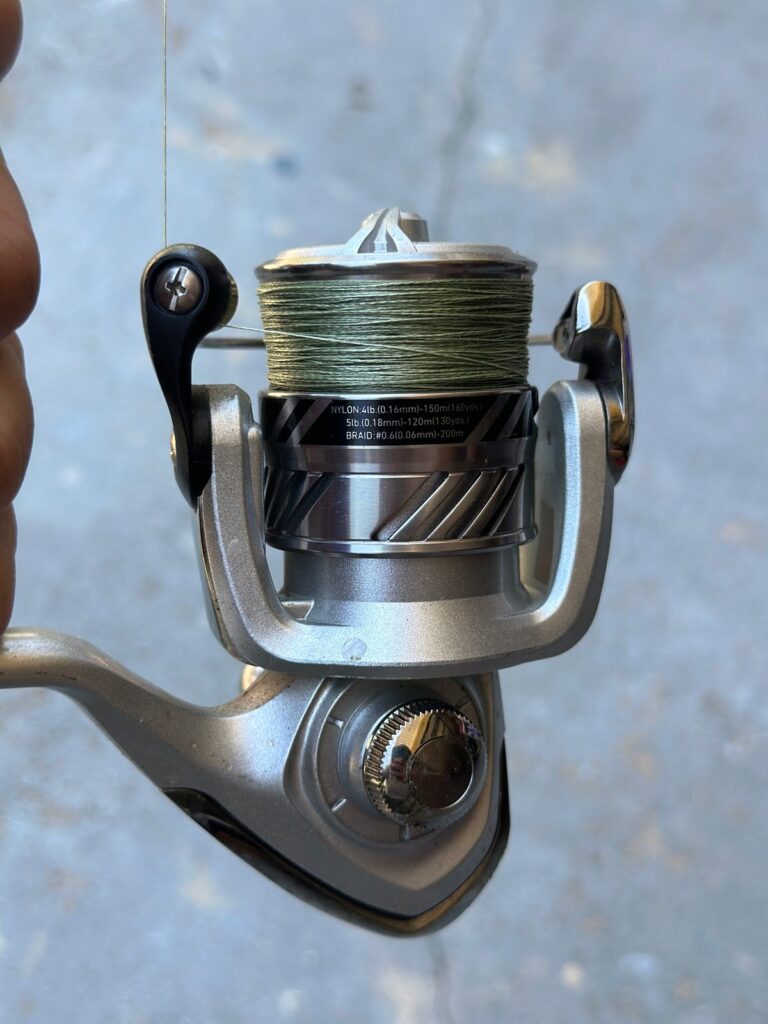
This can be ideal for those days when the bass aren’t in the mood to make quick strikes. A bass acts on instinct rather than reasoning when they blow up quickly, but when they slow down to carefully consider what they’re eating, they have an easier time discerning your terminal tackle from real food!
A smaller, yet still valid benefit of monofilament line is its lower density. It tends to float more easily than other line types.
This is yet another win for finesse retrieves, this time specifically for topwater baits like frogs. Line that floats won’t disturb the water as much when you jig these baits.
When fishing finesse using mono line, use the lightest pound test you are comfortable with in order to minimize line visibility and to maximize jigging precision. The former matters slightly less in murkier water.
For most bass fishing, 15-pound test is the absolute highest you should need to use, and 10-pound test will work for all but the biggest of monsters. Some spinning reel techniques like backreeling can help you get away with even lighter line if used properly!
These strength rules apply to all types of line, not just mono.
Braided Line: Super Strength
If monofilament line was a compromise between strength and invisibility, then braided line sacrifices all of its low-vis prowess for sheer strength.
As the name suggests, braided line is not a single filament, but rather several much smaller threads that are braided together like a miniature rope. It’s no surprise that this fishing line feels much more like traditional string than other line types do.
Braided line has unrivaled strength as a result of this construction, with braided line of a given test being much thinner than the equivalent test monofilament line. This allows you to spool up more line than you’d be able to otherwise!
If you wish to bottom fish in an area with lots of snag potential, braided line is your friend due to its high abrasion resistance. Braid is also less elastic than monofilament line, which is worse for finesse but also improves your bite sensitivity.
Braided line is also much more resistant to being broken by sharp teeth! This may not matter for the bass themselves, but it could save your favorite lures if there are toothy fish that cohabitate with your local bass such as pike, bowfins, and/or snakeheads.
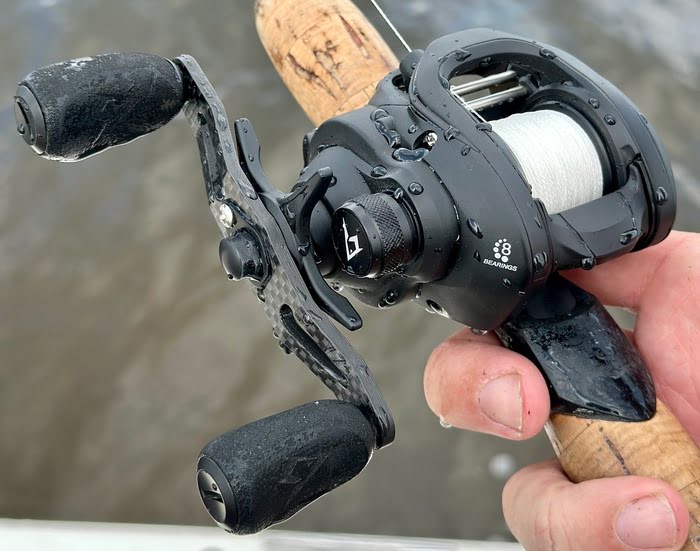
The trade-off to all of these benefits is that this line is completely opaque, making it more visible to fish. But in murky water, line visibility becomes much less of a problem!
Some braids turn this weakness into a strength with ultra-high visibility lines in all sorts of colors, including rainbow and glow in the dark line!
This can make the line easier for humans to see (and avoid messing with), so this is a good option for crowded fishing in very murky water.
The most commonly applicable use for braided line is casting heavy baits and retrieving hard through thick cover.
Throwing a topwater frog through a dense thicket of lily pads? Pulling a submerged jig through a weed forest? High-strength braided line is for you.
Braid also shines brightly when fighting big (and I mean BIG) bass on large bodies of water that’s not particularly clear.
Braid’s high strength allows you to safely wrangle these lake behemoths while the increased spool capacity gives you more peace of mind to let the bass run.
Fluorocarbon Line: The Invisible Tether
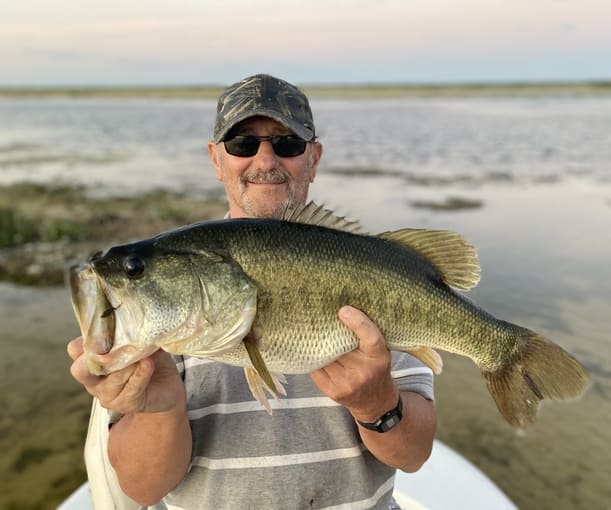
The newest of the three line types, fluorocarbon fishing line is constructed very similarly to monofilament line, with the exception that the polymer used is far stronger. While not as strong as braided line, it still offers a significant boost to break resistance over mono!
It’s a bit harder to tie a tight knot since fluoro line doesn’t bend as easily as the other line types, so just work slowly and carefully.
See Also: The Best Fluorocarbon Line for Baitcasters
The biggest selling point for fluoro line is its near invisibility underwater- even less visible than mono. This matters in still, crystal-clear waters where bass will have an easy time seeing higher-vis line. That can make or break your bite in these high-visibility conditions!
Mixing and Matching
So in summary, monofilament line will work well in almost every scenario and is also best for finesse work, but braided line is best for high-stress situations that could break weaker line, and fluorocarbon line is ideal for clear water with sharp-eyed bass.
But if you want to get even more technical, the use of line-to-line knots such as the double uni knot can get you the benefits of multiple different types!
For example, if you want to do some finesse work in a crystal clear mountain lake, tying an 18 inch long fluorocarbon leader onto the end of a long spool of monofilament line will give you the benefits of low line visibility and increased elasticity.
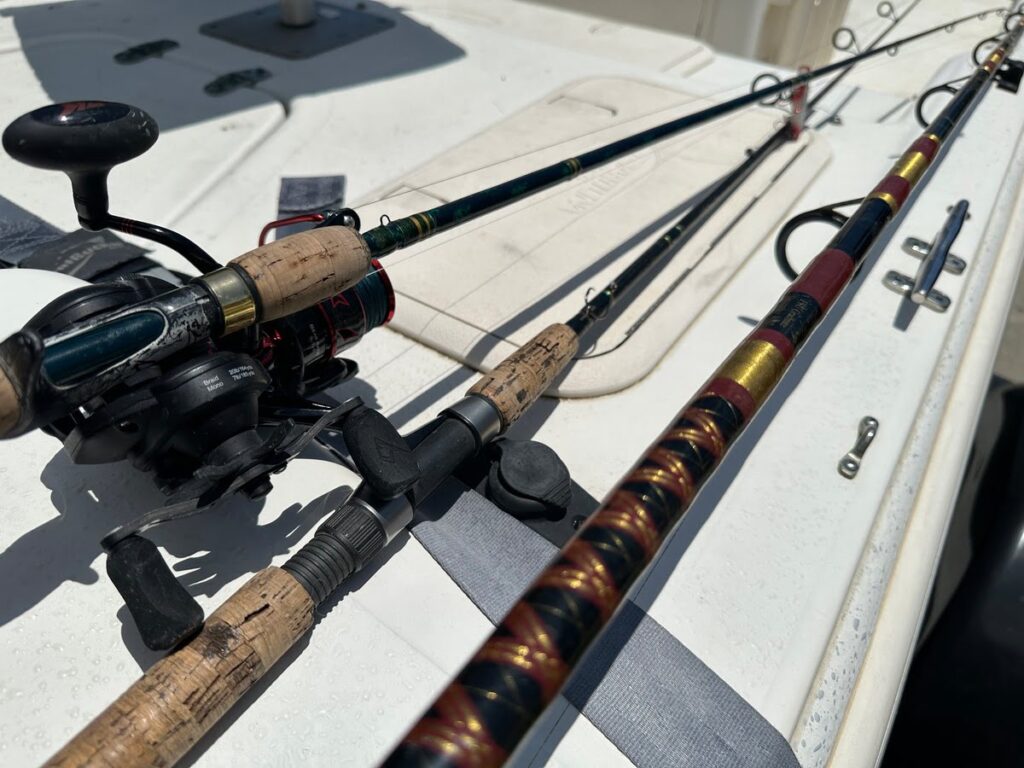
Mono-to-braid will give you perfect finesse in regions with sharp-toothed predators, and braid-to-fluoro will keep the strongest of predators from noticing your line.
These combos may not be helpful in the vast majority of cases, but they’re useful to know on those extra special days when they are.
Conclusion
Bass can have a lot of different needs, and thankfully there’s a line that works for nearly everyone. Whether you need strength, stealth, or precision, you can subtly tweak your rig’s performance to get the exact presentation you want- and get every bass to bite, no matter how skittish.
No matter what variety of fishing line you rock best, I hope that yours stays tight this fall! Good luck out there.
See Also: High Vis vs. Low Viz Fishing Line
If you haven’t guessed yet, I love fishing and everything about it!
To learn more about why I started Panfish Nation, visit the About page and follow along on Social Media:


Download a copy of my FREE Lure Color Selection Chart & Knot Guide!
Stay up to date with fishing reports, tackle reviews, industry news, and much more! We respect your privacy, unsubscribe at any time.
